There is no way to sweeten this: my original conclusion that Alstom’s Avelia Horizon (known as TGV-M with SNCF) is not legal at higher station platforms outside France was incorrect. Because transparency and correcting my errors matters to me, you can read the original blog entry in full here – with a big disclaimer on it! What follows here is a heavily re-written blog entry, after a conversation with Alstom on 13 March. The re-written post will explain what information was missing that led me to an erroneous conclusion.
The central point: the Avelia Horizon train is not ideal from an accessibility point of view, but is legal.
The new Alstom built SNCF TGV flagship train – the Avelia Horizon TGV-M – was presented in Paris on 11 March. The launch offered the first look at the interior of the train that ought to be running on tracks in France sometime in 2026, all being well. If that aspect interests you, see this Le Figaro story.
My preoccupation just now is a different one – future services through the Channel Tunnel. And it has been heavily rumoured that Eurostar is likely to place an order for this type of train, although so far no contract has been signed, as confirmed in this interview with Eurostar CEO Cazenave last month. Private firm Evolyn has also been exploring buying trains of this type. However seeing pictures from the launch made me start to wonder whether we have missed a reason for the delay getting these deals done – accessibility. It turns out that – legally at least – that cannot explain a contract not being concluded, although the accessibility of these trains is a challenge.
While I am often asked the question whether double decker trains can reach St Pancras on HS1 – the answer is obviously yes as the loading gauge permits it. The challenge, it turns out, are at the bottom of these trains, not the top.
It is all about doors, platforms, and boarding the train.
This is quite technical, but bear with me, and I will do my best to explain it all.
The first thing to consider is platform height. Platforms at railway stations in Europe are generally built to one of two standards – 550mm above the height of the rail, or 760mm above height of rail. All platforms for high speed trains in France are 550mm, but along HS1 in UK, and in Belgium, Netherlands, and western Germany the platform height is 760mm. That means a train running Paris to London, or indeed Paris – Bruxelles, needs to cope with both heights.
The disabled access door of the TGV-M lines up perfectly with a 550mm platform – as this picture from the launch shows:
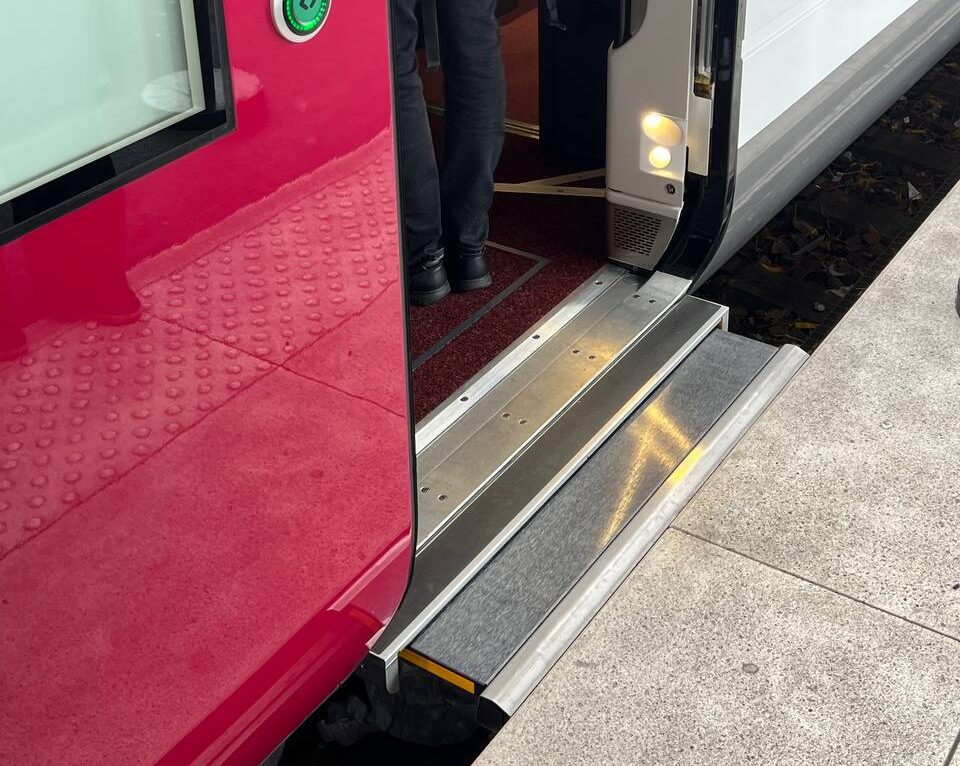
The common issue in the past was that the floor of a train was higher than the platform – and this then meant stairs inside the train up to floor level – you can see this here on the Bruxelles-Paris OUIGO service:
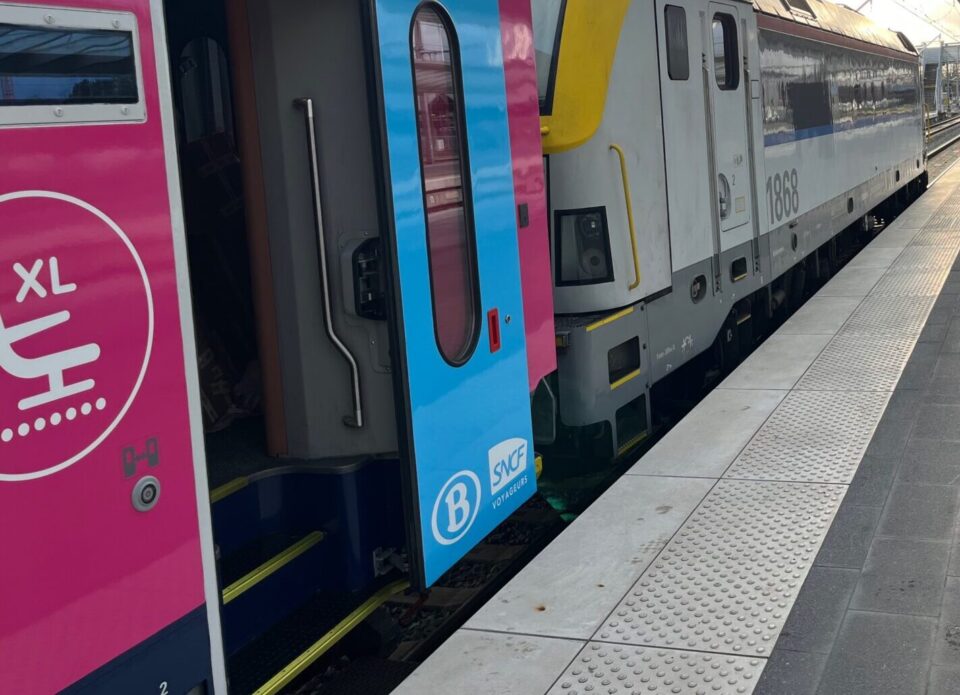
And getting into such a train with a wheelchair needs a lift or ramp on the platform – this is how it is done in Germany:
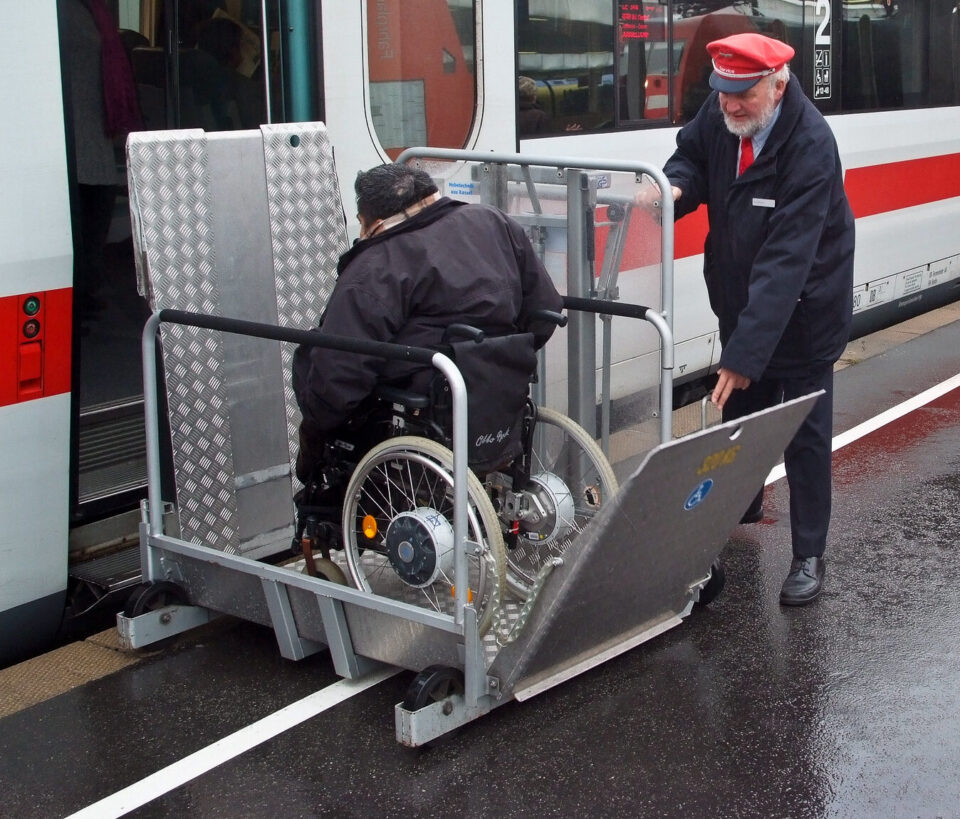
However the TGV-M poses the opposite problem – from a 760mm platform you have to step down, or get a wheelchair down into the train. And as if that were not enough, even though the bottom of the door of a TGV is something around 550mm, the floor is lower still, at about 300mm above the rail, so you need to go down further once you are inside.
And that is a challenge.
Let us first look at what the law says.
Commission Regulation (EU) 1300/2014 on the technical specifications for interoperability relating to accessibility of the Union’s rail system* for persons with disabilities and persons with reduced mobility is what we need to look at (all languages, and PDF and HTML versions of it here).
Access using steps is covered in 4.2.2.11.1., with tables for 550mm and 760mm platforms. And δν– mm – the distance a passenger can safely be expected to step down into a train from a 760mm platform is just 160mm. But the difference between 550mm and 760mm is 210mm.
And here is where Alstom has come up with some cunning solutions. Legal, but I think not quite ideal.
The bottom of the door on non-wheelchair accessible doors on the Avelia Horizon is at 617mm above the rail, not 550mm (and not knowing this difference was key to the error in my original post). I cannot find a public photo that shows this well, but this one just about does it – you can see the bottom of the door is slightly higher than the platform:
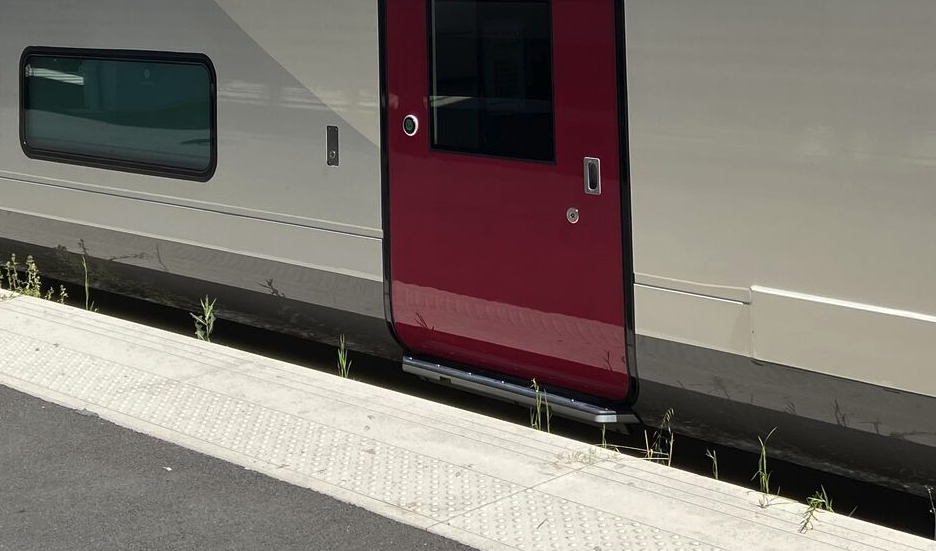
This is how it looks in diagram form – the step is 67mm higher than the platform:
And then if the train is at a 760mm platform, there is a step down of 143mm, like this:
That looks like a bit of a messy compromise to me. At a 550mm platform you go over a 67mm step and then down, and at 760mm you still have a big step down before two further steps. But – importantly – 143mm is less than 160mm, and that makes this solution legal.
The situation for wheelchair users at 760mm platforms also looks complex.
SNCF lauded the new interior lift for wheelchair users in the TGV-M at the launch today – this is what it looks like:
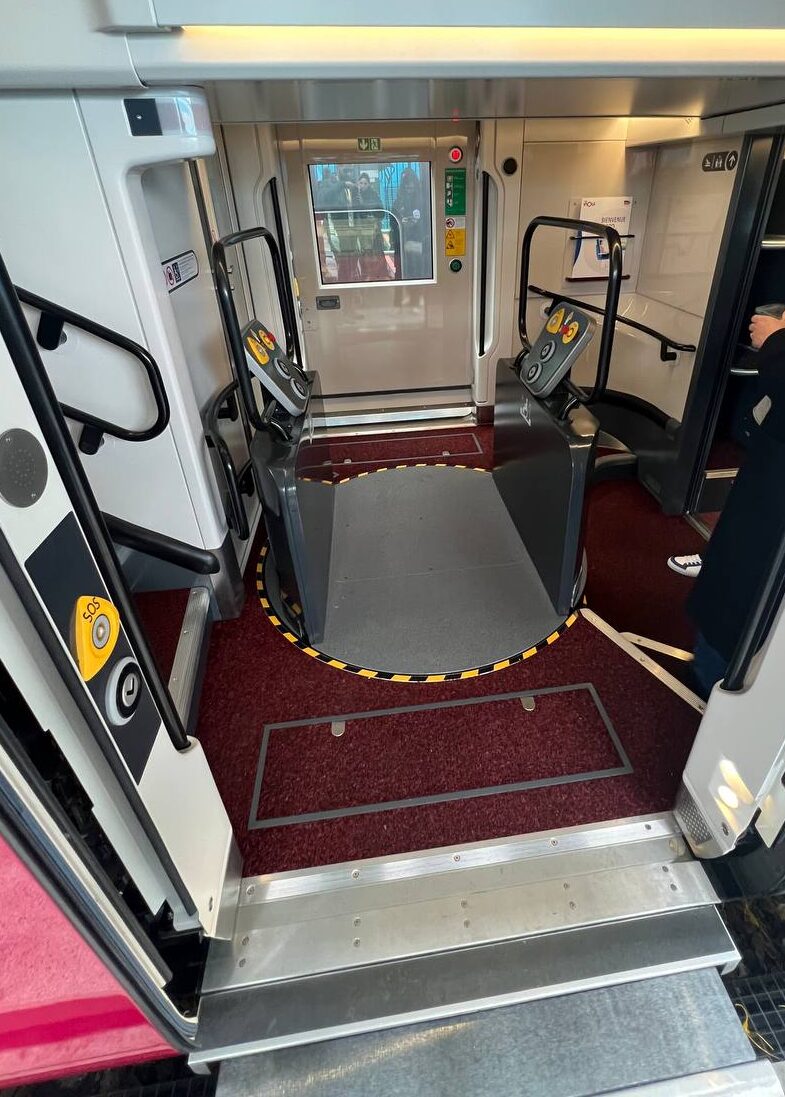
A wheelchair enters from the 550mm platform, and is then turned 90 degrees to the right and lowered to the 300mm floor height.
And here, Alstom has a further trick up its sleeve – there is only one carriage in the train with the wheelchair lift, but that carriage has an active suspension system (that I was unaware of!) – that can make sure the step of that carriage is lined up exactly to 550mm, or can be raised up to as high as 627mm above the rail. And there is a gap filler step as well.
That means at any platforms in France (and indeed in Italy or Switzerland) wheelchair users can be assured of a step free entrance or exit to the platform. And here wheelchair users can control all aspects of the system themselves – no need for crew.
However the on board lift will not go all the way to 760mm, so an extra ramp is needed there – similar to the system used in older TGV Duplex trains at German 760mm platforms (pictures of this system here).
But the active suspension also helps a bit with this. Rather than a very steep ramp:
You end up with a slightly less steep one, like this:
The Regulation 1300/2014 is a little contradictory on ramp gradients – these are stipulated in 4.2.2.8. in general, while 5.3.2.9. on boarding ramps states a slope of 18% is permissible for entry-exit. Either of these ramps is compliant, while the 8% one is obviously better. What Alstom has built here is not a swift or elegant solution, but at least it is technically compliant with 1300/2014.
I also fear that an on board lift, an active suspension system, and only one wheelchair area per train, mean this system has a lot of potential points of failure. But it looks like it is legal.
A more elegant solution would be to engineer the wheelchair lift to rise all the way up to a height of 760mm, meaning only a flat bridge would be needed to cross the gap to the platform. But this is not built into the Avelia Horizon for SNCF showcased this week.
But thinking more fundamentally, is there any other solution here?
Maybe the solution is indeed to look up.
The lower floor of the double deck carriages of Siemens Desiro HC EMUs for services around Berlin have step free doors into the bottom floor of double deck carriages for both 550mm and 760mm platform heights (see Page 7 of the Siemens publicity PDF for how it’s done) but doing this in a TGV would bring you another problem – very limited headroom on the lower floor.
However the loading gauge in Germany – G2 as standard, GC for new builds – allows a total vehicle height of around 4650mm. This is about 300mm higher than the 4320mm total height of a TGV-M which – like the 550mm platform height – is the standard for France. Add an extra 320mm to the height of your carriage and you have extra room for steps and/or lifts or even fixed sloping floors inside the lower floor of your train.
French high speed lines – built since the 1980s – have been built to the UIC GC standard, so 4650mm would work there, including from the Channel Tunnel all the way to the edge of Paris. It is on French older lines – including on the 16km approach to Paris Gare du Nord – that some loading gauge works would be required. But you could envisage a higher 4650mm TGV-M version for Channel Tunnel services, and for France-Belgium-Netherlands services too, and the current 4320mm version for services within France, and to Italy and Switzerland – all places with 550mm platforms. The cost and complexity of doing this is likely to be considerable!
But overall the conclusion here is clear: TGV-M, as currently engineered for SNCF, can legally be used with 760mm platforms, although the way the solutions have been engineered present some shortcomings (and even a minor trip danger at 550mm platforms). Those shortcomings may of course be part of the reason that some potential purchasers have not yet signed to buy Avelia Horizon, but legally speaking operators look to be on safe ground.
Credits
Loads of people have helped me understand this topic – on both Mastodon (Edmund Lauterbach, Jos Dingjan, wibble, Sarah Wilson, Tursiae, Tenkoman) and Bluesky (Arian, tristramg, Frankyman, Max Wyss, Torsten, Fahrradfreundlicher Arbeitgeber, Lennart Fahnenmüller). Particular credit to Sam Jennings on Bluesky who gave me the kick I needed to look into all of this! And thanks in particular to three staff at Alstom who provided me the numbers to make all of this make sense, and update the post. Any enduring errors that appear in this text are mine, and mine alone. If any of the text here proves to be incorrect, I will correct the text and make it clear what changes were made.
Notes
* – even though the UK is outside the EU, any train transiting the Channel Tunnel has to enter EU territory, so these rules still apply. The UK has also implemented these rules nationally – thanks Will Deakin.
** – the older TGV Duplex design pre-dates regulation 1300/2014, so will have grandfathering rights, and hence could be used in these cases. In addition this means TGV-M, in this form, also cannot run to Spain – as 760mm is the platform height there too, while TGV Duplex is running there.
Images used in this post
Pictures of the TGV-M have been sent to me by a friend, and are used with permission – but cannot be re-used. The OUIGO train with steps picture, and the wheelchair ramp sketch are mine, and can be re-used. Other photos are CC licensed, as follows:
 Arne List
Arne List
Klappe hoch
October 16, 2009
CC BY-SA 2.0
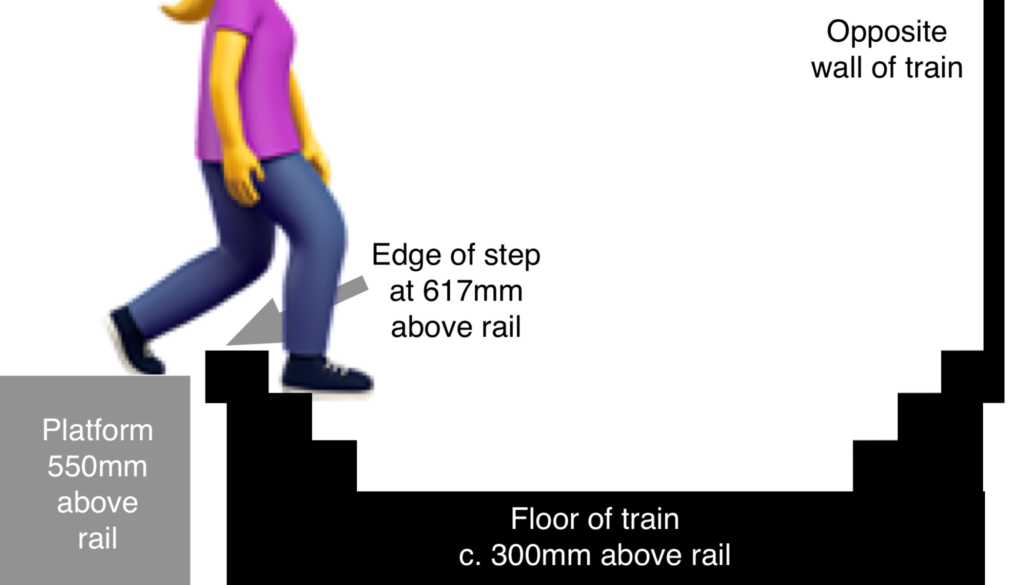
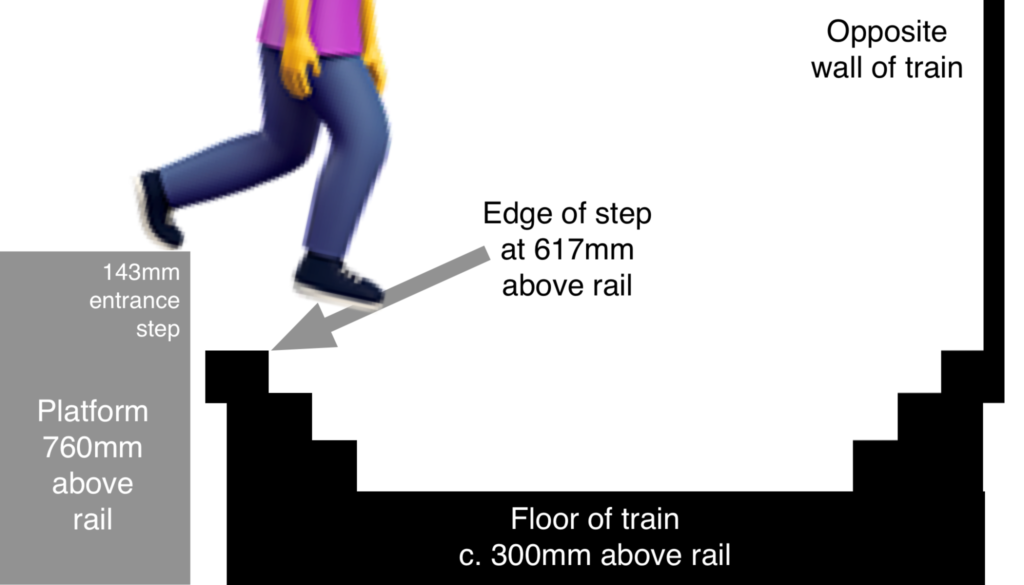
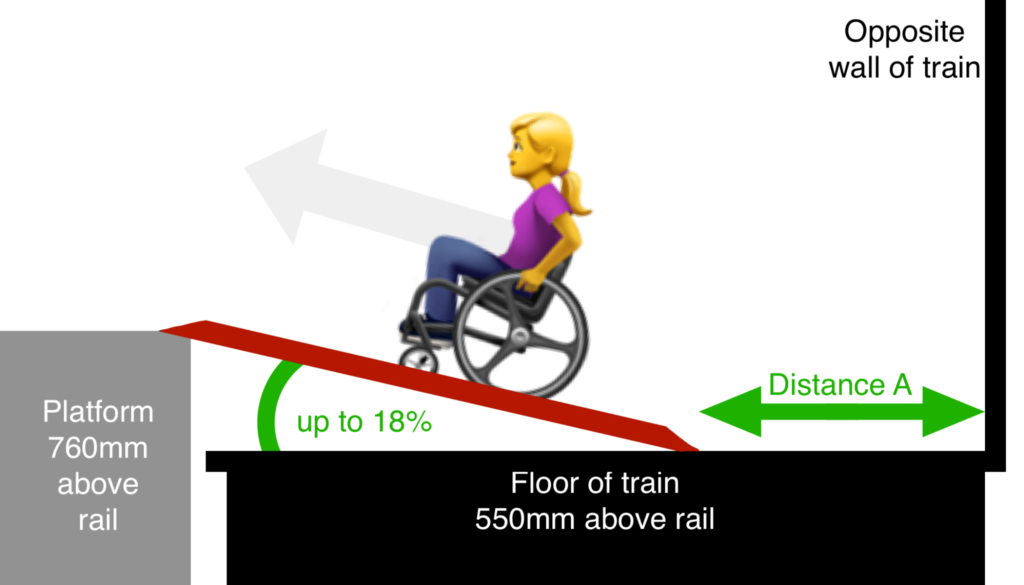
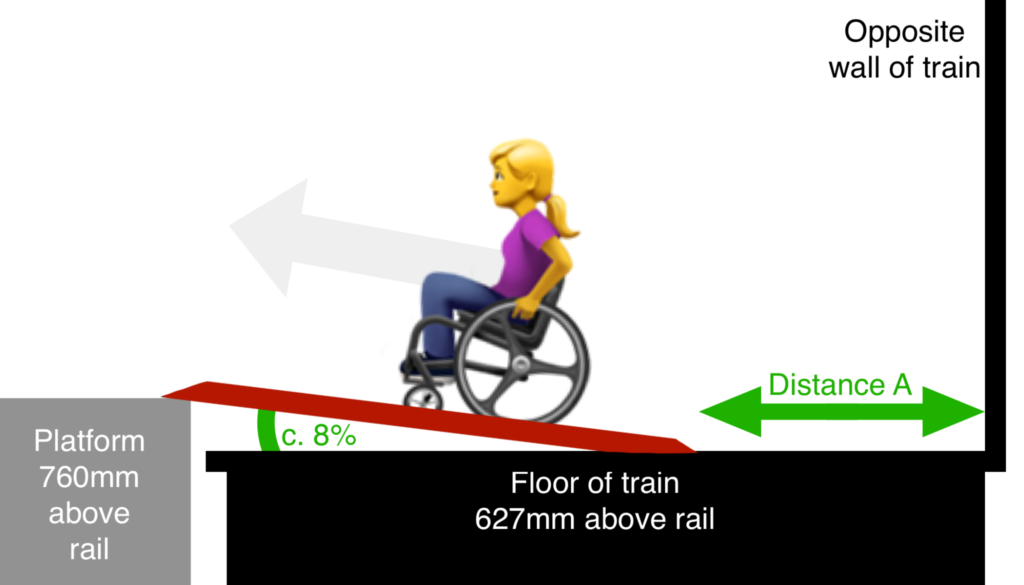
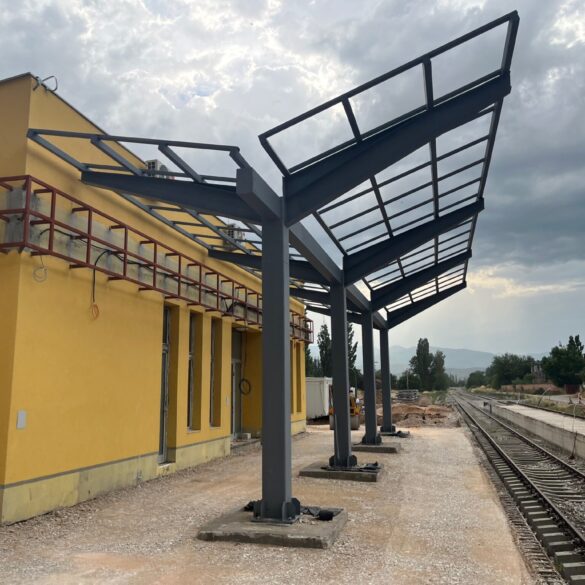
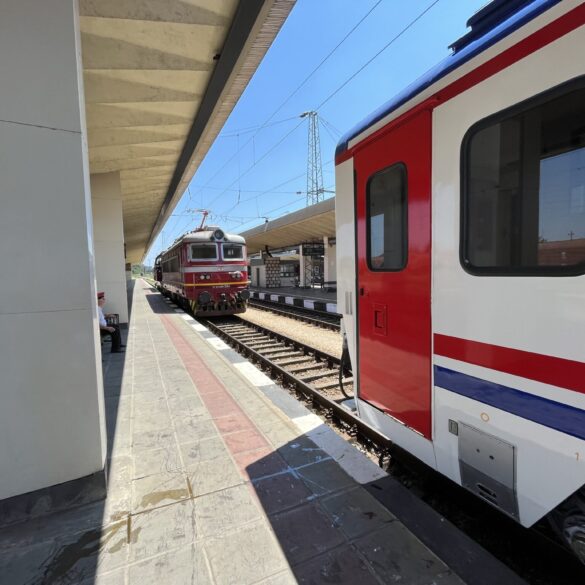
Interesting and thorough article 👍
However, LGV PSE and ATL were built to UIC GB, not GC.
HS1 features UIC GC on Dollands Moor – Dagenham, but Ashford International and the tunnels Dagenham – Camden feature UIC GB+
OK, but LGV Nord is UIC GC, right?
Dagenham – Camden you don’t need to bother with, and Eurostar does not really want to deal with Ashford *either*. So non stop from St Pancras to the edge of Paris with a 4650mm high train is doable I think?
Fréthun – Gonesse is indeed built to UIC GC, but Gonesse – Paris GdN remains GB…
Right, that clears it up. Thank you!
Now to work out how much improving Gonesse – Paris Gare du Nord would cost 😀
Paris GdN – Gonesse is a busy and fragile segment, so, gauge-clearance work would require tight planning. There are a few overpasses, but the trickiest piece is likely to be the station of Garges-Sarcelles 🤔🧐
Let’s not get ahead of ourselves – whether this is even being considered as a way of doing it I don’t know.
Of course while we are at it, we could consider the same into Gare de l’Est from LGV Est as well, and whatever you would need through Strasbourg to Germany…
Funnily enough, the TGV-M should be able to use 760mm platforms in Germany, given the German specific case presented in 7.3.2.6. Table 20 : delta v- = 230mm.
I reckon the ‘solution’ is to apply for a derogation based on the fact that the Germans happen to have accepted exactly this case.
Doing that for a design of train that pre-dated the 2014 law (as Euroduplex does) is one thing. Doing this with a completely new design of train is something else. At the very least you would need to know the answer to that question before making an order!
The Twindexx Swiss Express for Switzerland, nowadays also an Alstom product, specifically has its entrances at 600mm to legally run into Germany for this very reason. This height hasn’t been super popular in Switzerland (in particular the resulting ramps on the inside for wheelchairs). As of right now the train doesn’t actually run into Germany but that’s a different issue. (In general the story of that train is incredibly relevant to the issues here and well worth exploring if you have back issues of SER)
I don’t know what the precise figure is for the TGV M though.
But as Twindexx is 4.7m tall, at least you have enough space in the vestibules for that.
TGV-M bottom of the doors is right at 550mm.
I did wonder what would happen with that solution – bottom of the door at c. 610mm – but then you’d have a step up and immediately a step down in a TGV-M, and that would lead to people tripping up I think.
@Thorsten Kammer: But the 502 also have a lower than 550 mm floor on the lower deck, and there are internal ramps. I do remember that one of the disability organisations wanted to do additional damage with the argument that these ramps were too steep. These ramps are indeed steeper than the ones of the 511/512 KISSes.
A potential workaround could be to abandon one carbody to be bi-level, and crate a single-level accessible space with doors at two heights, and maybe an internal lift to the upper level (assuming the passages were wide enough.
For wheelchairs, yes, that would work. But that doesn’t solve the door step problem at every other door.
Having just one car be wheelchair accessible feels like it really misses the point of accessibility. a) It still makes wheelchair users into second-class travellers b) step-free accessibility is valuable for a lot more than just wheelchair users, from elderly, to sight-impaired, or even just travelers with heavy bags.
Absolutely. That’s why I was not exactly positive in my tone here. This train is officially compliant, but has numerous shortcomings!
You make it sound as if the Siemens Desiro HC in Berlin provide level boarding at both 550 and 760mm simultaneously. However, the linked document seems to suggest that the Desiro HC can provide either 550 or 760mm level boarding, not both. The graphic in the document seems to confirm this as well.
That linked document about the HC is not great I admit, but I struggled to find a better one. But I can confirm – having seen it with my own eyes – the Desiro HC for ODEG has a 55cm step free door, and a 76cm step free door, in the bottom level of a double deck carriage, and a way for a wheelchair to go between the doors as the corridor is wide.